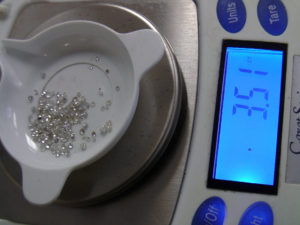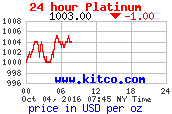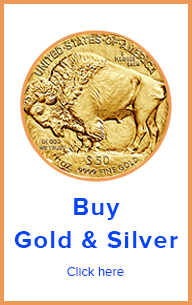Are Diamonds Rare Stones?
Wrong Statement: Diamonds are rare stones
Correct Statement: Gem grade diamonds are rare stones
Diamond Rarity Reality
Diamonds, in reality, are a not uncommon stone. It is not like there are everywhere, but there are lots of diamonds. However, the very vast majority of diamonds only qualify for industrial purposes at the most. What is much harder to find is gem grade diamonds.
Diamonds have two main qualities that make them useful
- Hardness
- Light Refracting-ness

Grades Based on Order of Rareness
Most Common: Industrial Diamonds
Diamonds are among the hardest materials. They are really hart to scratch, but scratch other things very easily. Thus, they are great abrasives. This makes industrial diamonds very useful. Thus they are in high demand. Diamond blades, industrial polishers and all kinds of abrasive supplies contain industrial diamonds, and are inexpensive. Industrial grade diamonds are very common but not super abundant. Large deposits of this type of diamonds exist all over the world. However, industrial diamonds, have very poor light refraction qualities. So they are good for industrial use, but not for jewelry. To encounter this diamonds, a few tons of dirt need to be removed from the mine.
Not Rare: Melee Grade Diamonds
This is the most common jewelry grade diamond. Melee grade diamonds are diamonds that are better utilized as small stones highlighting a jewel. This type of diamond is 0.01 carat or less, to no more than 0.20 carat in mass. Most melee grade diamonds contain a lot of carbon deposits and other imperfections. The bigger the diamond, the more those imperfections become evident. Thus, melee grade diamonds are cut into smaller stones. The more imperfections, the smaller that type of melee will be cut. The smaller melee diamonds are below 0.01 carats in mass and are called chips. Melee are most often used as companions to larger stones or as highlights to gold jewelry, but are almost never a main feature. To encounter this grade stones, several tons of dirt need to be removed from the diamond mine.
Not Un-Rare: Sub-Half Carat Grade Diamonds
The larger the diamond, the more evident imperfections become. Starting 1/4 (0.25ct) color, and imperfections become more evident. Thus, some stones are too good for melee, but not good enough to be cut at bigger than half (0.5) carat. This type of stones are used in the lower end, tight budget engagement rings. To encounter this grade of stones, several tons of dirt need to be removed from the diamond mine. They provide a lot of value for the money. This type of diamond is good enough to be the center piece of a jewel, but not good enough for investing in certifying the stone.
Less Rare: Sub 1 Carat Grade Diamonds
These stones tend to be of much better refraction qualities. Because they are much larger than the previous size, they tend to be selected because they have few imperfections. To encounter this diamonds tens of tons of dirt need to be removed from the diamond mine. However, at this size range, any imperfection becomes very evident. These diamonds are usually sized all the way to nominal 1 carat, not are not actual one carat. These stones tend to be used in for example, above lower end engagement ring. Sub 1 carat grade diamonds are for the most part not worth GIA certifying. The issue with certifying this grade diamond is that the cost of paying for a GIA certificate does not justify what people are willing to pay for them. Plus, the certificate will point out the imperfections and make them an issue. So might was well not pay for the certificate, not bring up the issue of imperfection, and charge less for them.
Rare: Over 1 Carat Certifiable Grade Diamonds
This grade diamonds are of excellent refraction qualities, have minimal flaws, and are almost colorless. Starting at this grade of diamond, a gemologist is needed to find the imperfections and assess the color. To encounter this stones, hundreds of tons of mining ore need to be extracted from the diamond mine. Well selected over one carat certifiable stones are worth investing on cutting for maximum refraction, which takes more skill, and removes more material out the raw material. The result is a nice diamond with great refraction. Adding a GIA certificate is for this quality diamonds is worth obtaining because most of what will be pointed out will be good. Because of all of the above, people are willing to pay much more for certified, over 1 carat diamond
Very Rare: Over 2 Carat Certifiable Grade Diamonds
This level diamonds have all of the above qualities but in larger size. Starting 2 carat, it is really hard to find good enough quality raw diamonds that fit the bill for cutting for that size. To encounter this stones, thousands of tons of ore need to be remove from the diamond mine. Needless to say, most well selected over 2 carat diamonds are worth certifying. Unless something is wrong, over 2 carat diamonds are normally excellent stones, with nothing to complain about.
Extremely Rare: Over 2 Carat Diamonds and Fancy Color Diamonds
Unless something is wrong, over 2 carat diamonds and fancy colored diamonds are outrageous stones. For sure only the best of the best cutters sculpt extremely rare stones. To encounter this grade of stone tens of thousands of stones need to be removed from a mine. Needless too say, this grade diamonds are the most beautiful, most valued, and what people are willing to pay the most.
Resources
IGS – International Gem Society


![[Most Recent Quotes from www.kitco.com]](http://www.kitconet.com/charts/metals/gold/t24_au_en_usoz_2.gif)
![[Most Recent Quotes from www.kitco.com]](http://www.kitconet.com/charts/metals/silver/t24_ag_en_usoz_2.gif)
![[Most Recent Quotes from www.kitco.com]](http://www.kitconet.com/charts/metals/platinum/t24_pt_en_usoz_2.gif)










